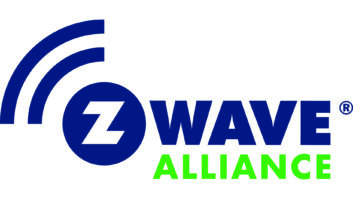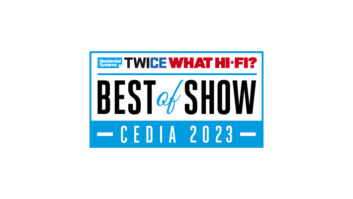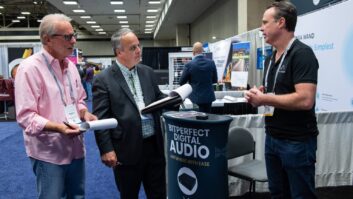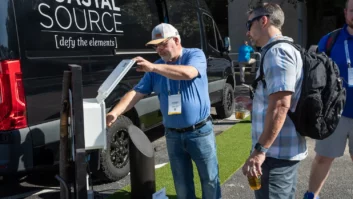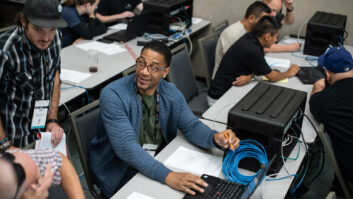Installers Find Many Reasons To Be Optimistic About Business
Ultra HD projectors and sources, object-based surround, high dynamic range (HDR) video, wide color gamut, and wireless multiroom audio created a buzz at the CEDIA Expo.
Installers also ran across a greater selection of DIY products that, some contended, also make sense in their portfolios.
Here’s a look at some of the key issues that dominated the show:
Business is good and getting better.
Systems integrators-A/V installers will boost their gross revenues for the third consecutive year in 2015, CEDIA found in its latest annual survey of the companies. Average gross revenues will rise to $2.54 million in 2015, up from 2014’s $2.2 million and 2013’s $1.46 million. In 2012, average revenues fell to $1.27 million.
The average number of projects is also rising, hitting an expected 66 in 2015, up from 59 last year and 51 in 2013.
Reasons include customer traffic driven by growing demand for Ultra HD TV and the growing selection of large-screen flat-panel TVs with sizes up to 120 inches for a new Vizio model with Dolby Vision HDR technology. New networked-music sources are driving consumers to update their multiroom-audio systems, and connectivity technologies such as HDMI 2.0 and 2.0a are driving consumers to upgrade audio components, as will object-based surround formats.
4K projectors are proliferating.
More 4K projectors turned up at the show, including some of the first models with HDR and near- BT.2020 color gamut. Digital Projection and Sony showed projectors that deliver near-BT.2020 gamut, and Sony showed its first two front projectors capable of delivering HDR content.
Laser projectors also shined at the show, delivering brighter pictures in higher ambient light environments, or bigger pictures in low-light environments, with a long-lasting light source.
Better 4K sources are closer to market.
Installing dealers are looking forward to offering 4K video sources whose picture quality exceeds that of 4K video-streaming services, which deliver content at high compression rates over home networks. For these installers, Prima Cinema demonstrated a prototype 4K version of its $35,000 Prima Movie Player, which downloads movies while they’re still in theaters. And Kaleidescape unveiled its first 4K Ultra HD movie players, which like their 1080p predecessors play movies downloaded from the Kaleidescape store.
Wireless multiroom audio goes mainstream.
Although wireless tabletop speakers might not seem to be a welcome development at a show for installers, the technology also appeared in configurations welcomed by installers, including a Bose custom-install amplifier and a Fusion Research multizone-audio server. The technology also turned up in high-end Anthem AVRs at home in custom home theaters. Other solutions welcome by installers let consumers control music played back through a mix of wireless and wired zones.
Dolby Atmos speakers see wide adoption.
The selection of speakers designed expressly for Atmos-enabled home theaters grew at the show and, for the first time, included a pair of Atmos height-speaker modules intended for in-wall installation. The SpeakerCraft and Triad Speakers models are targeted to consumers averse to installing two or more in-ceiling height-channel speakers. The products also simplify retrofit installations in which in-ceiling height speakers would be more difficult to add.
Object-oriented surround is finding its way into more components.
The object-based surround technologies turned up in a broader selection of audio/video receivers and audio/video processors, with such companies as Anthem, Arcam, AudioControl, DataSat, Indy Audio Labs and Sony joining the parade. Existing suppliers include Denon, Integra, Marantz, Onkyo, Pioneer and Yamaha.
DIY home automation is not just for DIY-ers.
Well-known companies such as Savant and Nortek’s GoControl joined with relative newcomers such as Fibaro to show products available through DIY and integrator channels.
Some of the products are equally at home in systems with DIY hubs or professionally installed hubs. Custom integrators can also sell the products as add-ons to simple jobs such as mounting a TV on a wall.








